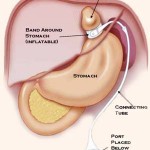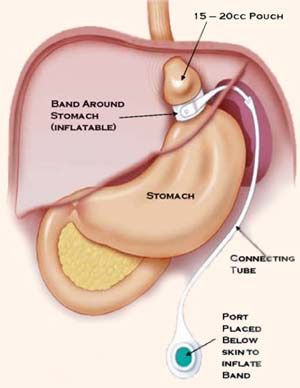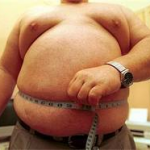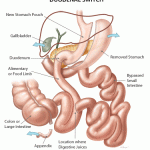Types of adjustable bands
In the U.S. market, two types of adjustable gastric bands have been approved by the FDA: Realize Band and Lap-Band. The Lap-Band System obtained FDA approval in 2001. The device comes in five different sizes and has undergone modification over the years. The latest models, the Lap-Band AP-L and Lap-Band AP-S, feature a standardized injection port sutured into the skin and fill volumes of 14 mL and 10 mL respectively.
 The Realize Adjustable Gastric Band obtained FDA approval in 2007. Realize Band-C has a 14% greater adjustment range than the Realize Band. Both the Realize Band and Realize Band-C, however, are one-size-fits-all. The device differentiates itself from the Lap-Band AP series through its sutureless injection port installation and larger range of isostatic adjustments. The maximum fill volume for the Realize Band is 9mL, while the newer Realize Band-C has a fill volume of 11mL. Both fill volumes fall within a low pressure range to prevent discomfort or strain to the band.
The Realize Adjustable Gastric Band obtained FDA approval in 2007. Realize Band-C has a 14% greater adjustment range than the Realize Band. Both the Realize Band and Realize Band-C, however, are one-size-fits-all. The device differentiates itself from the Lap-Band AP series through its sutureless injection port installation and larger range of isostatic adjustments. The maximum fill volume for the Realize Band is 9mL, while the newer Realize Band-C has a fill volume of 11mL. Both fill volumes fall within a low pressure range to prevent discomfort or strain to the band.
Two other adjustable gastric bands are in use outside of the United States: Heliogast and Midband. Neither band has been approved by the FDA. The Midband was the first to market in 2000. In order to preserve the gastric wall in event of rubbing, the device contains no sharp edges or irregularities. It is also opaque to x-rays, making it easy to locate and adjust. The Heliogast band entered the market in 2003. The device features a streamlined band to ease insertion during the operation.
Surgical indications
In general, gastric banding is indicated for people for whom all of the following apply:
- Body Mass Index above 40, or those who are 100 pounds (7 stone/45 kilograms) or more over their estimated ideal weight, according to the National Institutes of Health,or those between 30 to 40 with co-morbidities that may improve with weight loss (type 2 diabetes, hypertension, high cholesterol, non-alcoholic fatty liver disease and obstructive sleep apnea.)
- Age between 18 and 55 years (although there are doctors who will work outside these ages, some as young as 12).
- Failure of medically supervised dietary therapy (for about 6 months).
- History of obesity (up to 5 years).
- Comprehension of the risks and benefits of the procedure and willingness to comply with the substantial lifelong dietary     restrictions required for long term success.
Gastric banding is usually not recommended for people with any of the following:
- If the surgery or treatment represents an unreasonable risk to the patient
- Untreated endocrine diseases such as hypothyroidism
- Inflammatory diseases of the gastrointestinal tract such as ulcers, esophagitis or Crohn’s disease.
- Severe cardiopulmonary diseases or other conditions which may make them poor surgical candidates in general.
- An allergic reaction to materials contained in the band or who have exhibited a pain intolerance to implanted devices
- Dependency on alcohol or drugs
- People with severe learning or cognitive disabilities or emotionally unstable people
Special considerations for pregnancy
If considering pregnancy, ideally the patient should be in optimum nutritional condition prior to, or immediately following conception; deflation of the band may be required prior to a planned conception. Deflation should also be considered should the patient experience morning sickness. The band may remain deflated during pregnancy and once breast feeding is completed, or if bottle feeding, the band may be gradually re-inflated to aid postpartum weight loss as needed.
Comparison with other bariatric surgeries
Unlike more open forms of weight loss surgery (e.g. Roux-en-Y gastric bypass surgery (RNY), Biliopancreatic Diversion (BPD) and Duodenal Switch (DS)), gastric banding does not require cutting or removing any part of the digestive system. It is removable, requiring only a laparoscopic procedure to remove the band, after which the stomach usually returns to its normal pre-banded size so it is not unusual for a person to gain weight after having a band removed. However, it is not entirely reversible as adhesions and tissue scarring are inevitable. Unlike those who have procedures such as RNY, DS, or BPD, it is unusual for gastric band patients to experience any nutritional deficiencies or malabsorption of micro-nutrients. Calcium supplements and Vitamin B12 injections are not routinely required following gastric banding (as is often the case with RNY, for example). Gastric dumping syndrome issues also do not occur since intestines are not removed or re-routed.
Typically, patients who undergo adjustable gastric banding procedures lose less weight over the first 3.5 years than those who have RNY gastric bypass, BPD, or DS surgeries. Although other procedures appear to result in greater weight loss than adjustable gastric banding in the short term, results from the study by Maggard suggest that this difference decreases significantly over time. Gastric banding patients lose an average of 47.5% of their excess weight, according to a meta analysis by Buchwald.


